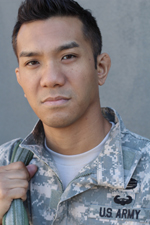
When asked what was one thing he wished he had known before leaving the US Marine Corp and pursuing a degree, one Student Veteran of America (SVA) wished he had “know[n] the difference between a ‘military friendly’ branded institution and one that is actually a resource to veteran students.”
Another wished he had known that “starting your education is a fresh start. You don’t have to do what you did in the military and you don’t have to be who you were in high school.” He referenced the fact that he barely made it out of high school but managed to obtain a bachelor degree from a prestigious Ivy League institution after his time in the military.
These two veterans were success stories at the ACE 2016 Service Member and Veteran Academic Advising Summit. Models of what could be, if our servicemembers and veterans are able to connect with the right institution.
Another SVA, however, knew nothing about accreditation before transitioning to school and had “no idea [his] school wasn’t accredited and [his] credits wouldn’t transfer.”
Are you really “military friendly”?
The issue of branding versus reality is a major one for servicemembers and veterans. It should also be a major question for your institution. Are you waiving SATs and ACTs for them understanding they have been out of high school for quite some time now? Are you holding an early orientation exclusively for servicemembers and veterans that allows early class registration so they do not waste precious funds in classes they do not need but had to register for because others were full? Are you creating easily-managed pathways from the military to higher education and finally to employers?
These are the types of realities that make an institution military friendly and help move servicemembers and veterans along in their transition.
Creating a pathway to a degree
The major roadblock in the pathway to a degree is comparability. How does the work the servicemember completed compare to what your institution requires?
One field seems to have the answer: allied health education.
According to Brigadier General Robert Miller, Director, Education and Training for the Defense Health Agency and Commandant at the Medical Education and Training Campus (METC, pronounced met-see), with the passing of the National Defense Act of 2017, the DoD will be able to establish bridge programs and articulations at the associate and bachelor degree level with institutions due to their ability to provide degrees, certificates, and official transcripts using the federal definition of a credit hour through the Uniformed Services University of the Health Sciences (USUHS), a Middle States-accredited institution.
This partnership between METC and USUHS will provide a “stackable” foundation for many academic pathways at institutions, will enable servicemembers and veterans to use Vol Ed and GI dollars for advanced classes and degrees, meets the White House credentialing initiative, and solves the military transcript problem for institutions.
The potential for developing partnerships and increasing the flow of military and veteran students into your institutions is great. If your institution is interested in establishing bridge programs and articulations at the associate and bachelor's degree level with METC, contact Quintina Barnett Gallion, AACRAO Assistant Director, Communication and Legislative Affairs.